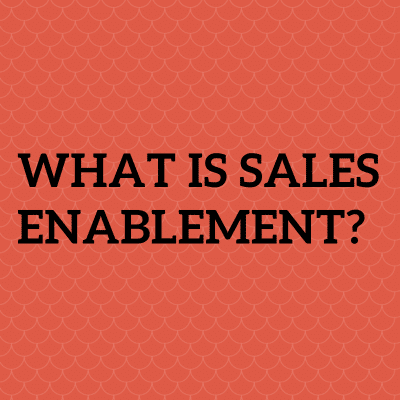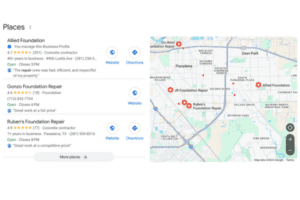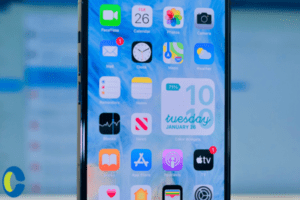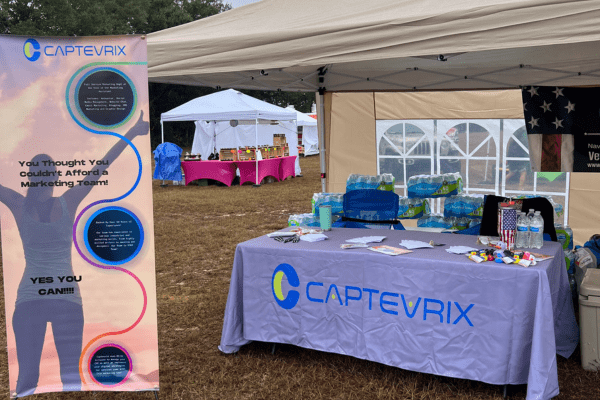In every type of career, there comes a lot of jargon to learn and understand which is vital to your growth. The same goes for handling your brand. The better you learn and understand the jargon used, the better you can put the practice into action and utilize it. One key term to understand is sales enablement.
If you go to Google it, you’re going to find many different places trying to sum up what exactly sales enablement is. And they try to do this within a single sentence. Yet there’s so much more that goes into the process than what it can be whittled down into one sentence. There’s a lot of information to know. But let’s do a little experiment – let’s try to break it down to a simple sentence.
What goes into Sales Enablement?
Sales enablement involves having and providing the sales team with the proper information, content, and tools to help them sell more effectively. You want to get the information about your customers into their hands, along with the content they need and the right sales tools to help make it effective.
Ultimately sales enablement is providing the right people with the right skills to make the right decisions for you and your consumer base.
From a competitive standpoint, organizations without a sales enablement practice or function will struggle to keep pace with the rest of the industry. But that’s not the only reason sales enablement is critical.
The goal of using sales enablement tools is to set up a scalable and repeatable process to drive revenues, for the entire sales team to follow, anchored by quantifiable metrics and reporting to help prove the ROI of the sales team as a whole, and the individual salespeople therein. It also serves as the bridge between the sales, marketing, product, and brand teams, to ensure the appropriate documents and messaging desired by marketing, is actually being used by the sales team. It is designed to make sure the customers see the most preferred content, at the most preferred times in the sales cycle, mapping to the customer journey and increasing conversion rates in the process.
Now you may be asking, what type of information, content and tools do they need? Or what can this do for my brand? Or why does it matter for your brand?
Today’s B2B customers are more informed and empowered than ever before, and often wait to engage sales teams until after they identify a solution. Combined with other changes in the marketplace, this makes it difficult for sellers to make a lasting impact with buyers.
If you want your inbound marketing strategy to be successful, you need to involve your sales team from the get-go. You need to invest in ongoing inbound sales training and coaching for your sales team to facilitate this transition and amplify the results of your inbound efforts. Once your sales reps understand and embrace the inbound methodology, their lives will be much, much easier and you will be on track to see a better return on your investment.
The simplest answer is that it will help drive your sales and help to make your brand successful. But let’s get back to everything your sales team needs to be able to implement this.
Information
A large amount of information can be used to help implement sales enablement within your team. You’ll want your sales team to have the content that your buyers are looking for and you’ll want them to be knowledgeable about the content they are offering.
Along with this, you’ll want to pass on information about your brand’s best practices policies. How do you expect them to treat your customers or clients? What should they do if someone has a particular question or concern or if a particular incident occurs? What customer service standards do you expect them to uphold when selling to your consumer base?
As well as knowing your best practices, the sales team also needs to know about the research that has been done on your consumer base. By knowing what has been learned about the consumer base, they can know how to appeal to them to make them want to buy what you’re producing.
All of this becomes part of what your sales team needs to know to move forward.
Training
In addition to your normal training materials and onboarding documents, you should create and maintain a library of resources for your sales team to have at their disposal when communicating with leads.
This library can include:
- Sales presentations
- Case studies
- Statistics organized by industry, features that you offer, and your own clients’ success
- Competitor analysis reports
- Overview sheets that they can quickly send to leads
By maintaining a sales content library, your sales team can have all of the essential information about your company on-hand that they can quickly access while they’re visiting with leads.
This helps them address concerns and provide reassurance in real-time, and it makes for an overall professional presentation of your company.
Case studies
Case studies are the most critical content for the sales team. This is a great way of having others present what they think you do well. HubSpot states that within six months of launching a new product, companies should aim to have at least one case study highlighting the product. Case studies are so effective because they clearly show your product or service solving a customer problem or challenge out in the real world for real customers just like your audience.
Creating email templates
HubSpot’s annual State of Inbound Sales report states that email is still the second most effective way for sales (only behind connecting via phone). This is why salespeople should spend hours creating the best possible email copy.
Taking the time to create standardized email templates that salespeople can access will dramatically improve productivity. When creating these templates, keep in mind that not all prospects are the same.
Leave spaces for customization with every email template ensures a sales rep can personalize it with information relevant to the prospect time after time. Additionally, using email templates makes it much easier to analyze and gain insight into the styles of email that work for your leads? What subjects lines work? Length, tone, images, etc?
Once they have all of the information they need, they will need consistent training on how to utilize what they know. You can utilize training programs and collaboration tools to make sure they are trained to meet their task and to ensure the training process is continuous.
Just as an athlete must train to ensure they’re in their best form for their sport, your sales team must be trained to use the information you provide them so that they are in their best form for your brand.
Through the training processes and through monitoring your team, you can see what they are utilizing, what works, and what needs to be tweaked along the way to make the operation run better and more satisfactory for you, your team, and your consumer base.
How do I put this into practice?
To implement this, one strategy would be to allow for on-demand consultation for your sales team. The sooner and easier they can access the information that they need, the sooner they can respond to a lead which according to a study , makes them seven times more likely to qualify for that lead and gain that consumers business than those that take longer to access the information they need and respond to the lead.
Another way to add this process into your brand would be to use an AI system or a Chatbot to help filter through a moderate amount of low value calls and emails. This AI can offer your consumer base an easier way to get the basic information that they need. It also allows your sales team to have access to the information and get responses they need from the AI in a timely manner so they can get back to the lead.
And you can set up a boot camp of sorts for your sales team to help keep their skills sharp, up to date, and help those that are under performing to do better. This boot camp can allow them to ask questions and gain a better understanding of portions of the process that they may not have a great handle on and can allow them to succeed with some extra support.
Why is this important for me?
Sales enablement allows you to have the information on hand and a sales team prepared so you can set realistic goals and have them met instead of trying to rely on the inherent skill of a sales person that is smooth enough to sell nearly anything to whoever happens to come upon your brand. Instead, you’ll have yourself a team of sales people with the right information, knowledge base, training, and tools to succeed and help your brand to flourish.
Studies have shown that companies that incorporate excellent sales enablement programs are:
- 2.2 times more effective at linking sales actions to revenue
- 83% more effective at improving productivity using technology, and,
- 58% more effective at finding, training, and retaining talent.
- Along with this, these companies also acquire:
- 32% higher team sales quota attainment,
- 24% better individual quota achievement, and
- 23% higher lead conversion rate.
Ultimately it’s for your consumers
Effective use of sales enablement is going to be centered on your customers and doing your best to fit what exactly it is that they want. Through research and information passed on to your sales team, they can know how best to interact with your consumer base and how to persuade them into your brand or your product.
Your sales team will thrive off an infrastructure that provides them with tools, resources, and information they need to continue the process of guiding prospects through their buyer’s journey. Most of your inbound marketing content needs an author or face behind it; making your sales team those voices of trusted authority on the subject matter help them nurture leads into customers.
Sales enablement has significantly evolved in the past decade, and yet there are still many exciting possibilities on the horizon. While the full impact of new technologies, such as artificial intelligence, on the sales function is still unknown, certainly sellers and managers will need to continue adapting and expanding their skill sets to achieve greater levels of success. As a strategic, forward-thinking partner, sales enablement will be the function to which organizations look to lead in growth areas and prepare sales teams to compete in the new landscape.
If sales is an engine of the business, then it follows that sales enablement is the fuel that keeps it performing at a high level. Sales enablement practitioners can and should be leveraged as invaluable problem solvers, committed to executing on the company’s strategic vision and priorities.
Our one sentence: Sales enablement is to provide salespeople with what they need to successfully engage the buyer throughout the buying process.















